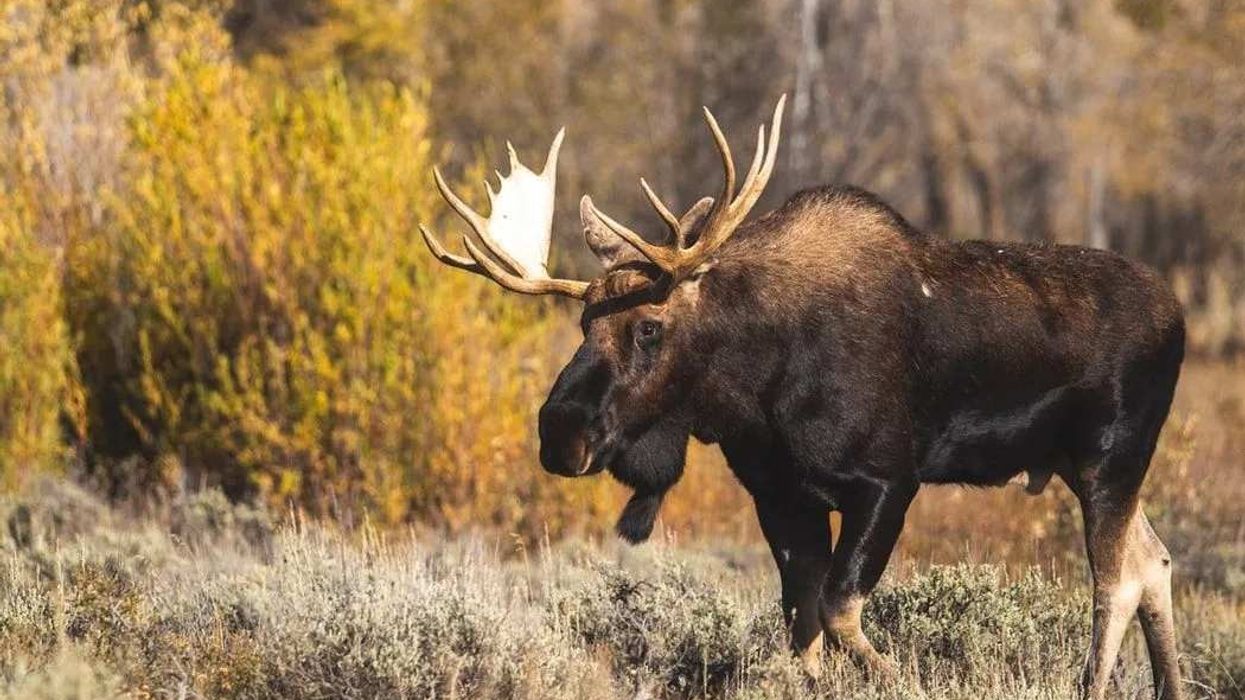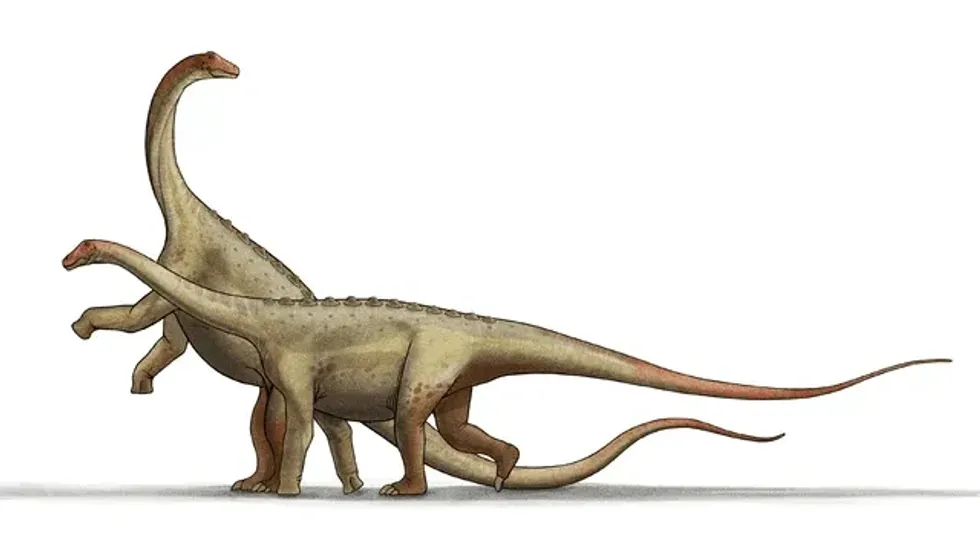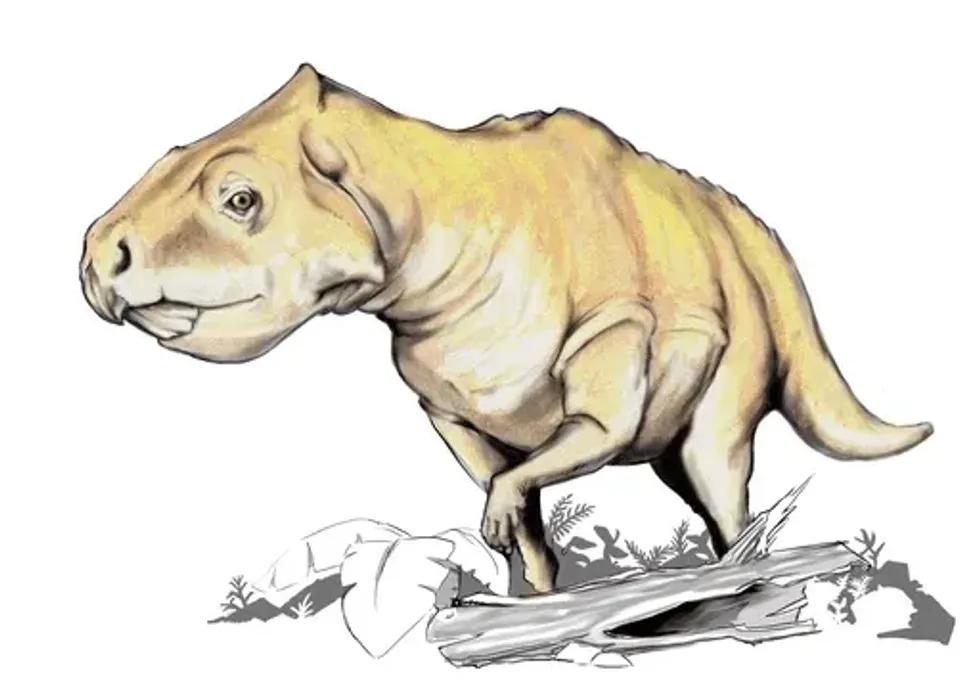Moose, with the scientific name Alces alces, are considered as one of the largest subspecies of deer. The bull moose are usually distinguished by their huge antlers that are flat and pointy on the edge.
These animals live in cold and winter places as their thick skin and hair provide them with a great deal of insulation. They are huge, run fast, are happy in the water, and thus helps them to be good swimmers.
The largest and biggest Alces out of all the sub-categories is considered to be the Alaskan, or Yukon, moose with an average height of seven feet and weight of 1400 pounds.
The next heaviest moose can be the Canadian moose where the calves themselves weigh around 33 pounds at birth with a height equal to that of an average fully grown bull which might range up to 6.5 feet. The moose can be spotted at the Kenai National Wildlife, Yellowstone National Park, and many other American national parks.
Keep on reading to learn more amazing facts about the species.
For more interesting facts check out the impala and the spiral horned antelope.
Moose Interesting Facts
What type of animal is Moose?
A moose belongs to the Cervidae and deer family of animals.
What class of animal Moose belongs to?
Moose belongs to the Mammalia class of animals.
How many Moose are there in the world?
On average the moose population can be estimated to be; European elk 300,000–400,000, eastern moose and western moose 500,000, Alaska or Yukon moose, and Shiras moose 200,000. Although their predators, like wolves and humans, hunt around 100,000 moose every year, their population does not waver.
Where does Moose live?
A moose's habitat is favorable in locations around Europe, North America, Asia, and New Zealand.
What is a Moose's habitat?
Moose have the ability to produce heat through their fermentation process and do not sweat often. This is the main reason why their most favorable habitat consists of the colder locations and not the warm ones.
Thus they are mainly found in the coniferous or deciduous forests and rocky mountains up towards the north. They usually tend to choose places that are near lakes, ponds, and rivers. This species has its majority in the tundra and taiga regions.
Who does Moose live with?
The moose population is quite solitary in nature and they do not live in herds. Although, the infants are known to live with the females for the first year after their birth.
How long does Moose live?
An infant moose usually wouldn't survive more than six months after birth as predators like wolves and bears hunt the young ones early in the wild. Once the infant lives beyond the first six months they might stay alive for up to 22 years of age. The adult moose have an average of 8 to 12 years of life.
How do they reproduce?
The male moose is known to fight for a female during the mating season which occurs during September and October. The largest and strongest adult male herds up all the females and defends them until the other males fight with the antlers to win the females.
Apart from this, the males and females are also known to make different sounds during the mating season to attract a mate.
Once the pair agrees, they are known to go their own ways to commence breeding. The males mate multiple times with different females during the mating season and ignore those females for the rest of the season.
After mating, the female carries out a gestation period of eight months and gives birth to one or two calves. Although this species is solitary, the baby moose are known to stay with the mother until the baby would grow old enough to stay on its own.
The baby feeds off the mother's milk, and the mother protects the baby from predators. The male is never to be seen again to care for the baby.
What is their conservation status?
The population of moose is considered to be of Least Concern by the International Union for Control of Nature (IUCN). They also have an increasing population curve.
Moose Fun Facts
What does Moose look like?

Moose are similar to deer but with a huge body and the unique antlers that the males have. With long front legs and comparatively shorter rear legs, they have long legs altogether.
The asymmetrical legs in front and back help the moose to jump over small shrubs or fallen trees in the forest. They have powerful shoulder muscles which sometimes even look like the moose is humpbacked.
Their head is long with small ears, and a bell-like dewlap that hangs on the throat which might be present for females. They have large upper lips with few teeth that help them to collect their food and teeth in the rear of their jaw to help them chew.
In between these, they do not have teeth. They also have a large nose.
As the male calves start to grow their antlers, they have a velvet skin covering which later fades out as the calves turn into adults. The antlers shed in winter and grow back in spring and summer every year.
Their underfur and long guard hairs provide excellent insulation from the cold of winter. Calves have reddish-brown hair without the deerlike spots. Their hair starts turning dark, black or brown, and the lower legs become light-colored as they grow older.
How cute are they?
Bull moose and the female Alces are considered to be the largest deers. The bull moose with its antlers usually looks amusing but equally dangerous. Hence, the moose is not considered to be a cute animal.
How do they communicate?
A moose has a great sense of smell and hearing. They usually communicate with chemical secretion by marking their territories. They also make loud sounds of a roar to indicated danger.
They are most vocal during the mating season when the cows moan and the bulls grunt. Although they are known to use their visual abilities, their eyesight is not the strongest point of reception and communication for them. They are thus tactile, acoustic, and chemically strong in terms of communicating with one another.
How big is Moose?
The moose is considered one of the largest and heaviest deers. They are two to three times bigger than the mule deers with an average length of 7.5-10.2 ft (2.3-3.1 m). They are 4.6–6.9 ft (1.4–2.1 m) in height above their shoulders.
How fast can Moose run?
These Alces are fast even if they look bulky. They sure can travel with an average speed of 20-35 mph. Additionally, moose love the water and are considered to be great swimmers. Being good swimmers, they are also known to stay under the water for 30 seconds or more and can move swiftly too.
How much does Moose weigh?
The largest adult moose ever recorded weighed almost 2,601 pounds or 1,180 kg. Otherwise, this deer species would weigh between 594.7-1698.2 pounds (270-771 kg).
What are the male moose and female moose called?
Males of these animals are known as bulls and females are known as cows.
What would you call a baby Moose?
An infant is called a calf.
What do they eat?
Moose are herbivores in nature and usually seek plants as their major source of food. In summer the Alces usually feed on herbs, shrubs, and leaves, while in winter, due to lack of vegetation and snow, they mainly feed on the buds and woody bark of pine trees.
In simple words, these animals eat twigs or buds of trees, their leaves, barks, pine cones, as well as a few aquatic plants like the water lilies and water grass.
These moose also keep their food in their stomach and regurgitate it over a period of time. The full-grown moose needs at least 44 lb or 20 kg of food every day.
Are they dangerous?
Although this deer species might look dangerous, they do not harm unless provoked. If these bulls or cows are troubled by humans, predators, or natural calamities like extreme snow, they might get aggressive which might impact some fatal reactions that can even kill five or more people.
Would they make a good pet?
Moose can surely make a good pet and it is not considered illegal to have them as pets. Even then, they are mainly seen in the wild rather than on farms because of their huge size.
Did you know...
A moose is also called an elk in Europe. Although, an American elk, (Cervus canadensis) also known as wapiti, is a different kind of deer.
Often these two large animals of the deer family can be confused with one another. An elk is similar to moose in its appearance without a bell near its throat like the moose.
The male moose have flat and pointed antlers, whereas the elk only has pointed long antlers. Elks live and roam around in groups whereas moose tend to keep to themselves and are solitary.
Additionally, elks are fearful of humans and try to find an escape when someone tries to come close whereas the moose are not scared of humans. By focusing on these simple traits they can be distinguished.
The Moose's call
The moose calls usually revolve around the sounds 'errr', 'erraah', 'ugh', 'ooh', 'grrr'. Their calls are either in one single tone or in two parts with different intensities to indicate danger or pain at times.
The intensity of their call expresses the different situations they want to communicate with each other. For instance; the cows usually moan and bulls grunt during the mating season to attract a mate.
Where does the Moose originate from?
In earlier days the moose were considered a type of deer. The earliest bones of these elks were found in Scotland which helps date their history to at least 3,900 years old.
The English, as well as the Americans, were confused by the two deer look-alikes of Alces alces and the Cervus canadensis. In 1606, the largest member of the New World deer family was introduced with the name 'moose'.
The name originated from the Eastern Abenaki word 'moos' which means 'the strips of tree bark'. Soon these animals were seen around the northern areas of North America, Russia, and most of the other regions with long and cold winter.
Here at Kidadl, we have carefully created lots of interesting family-friendly animal facts for everyone to discover! Learn more about some other mammals including elk and the black footed ferret.
You can even occupy yourself at home by drawing one of our moose coloring pages.










